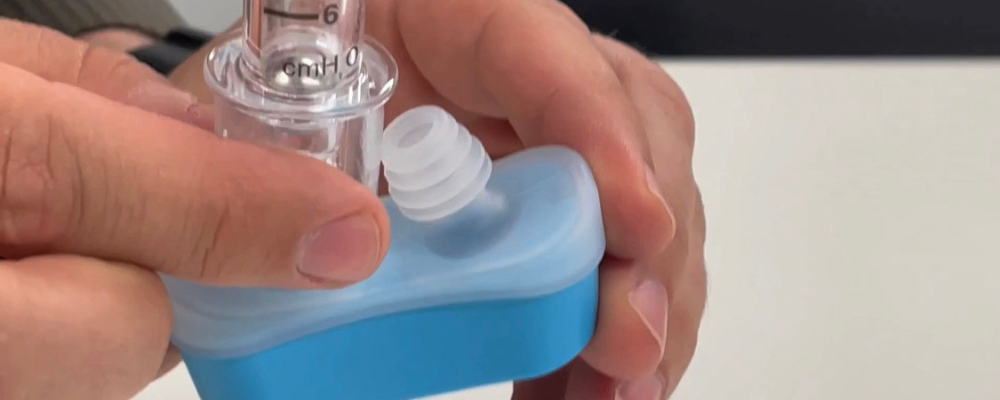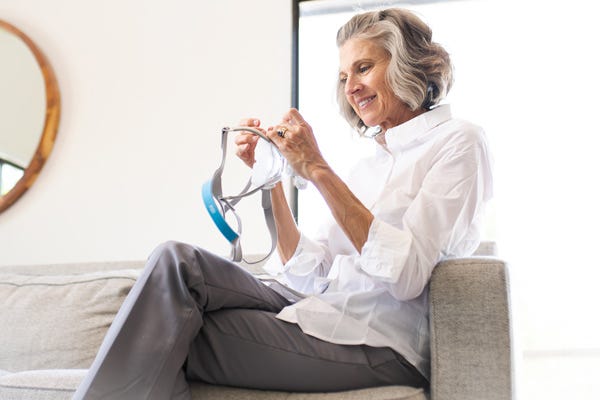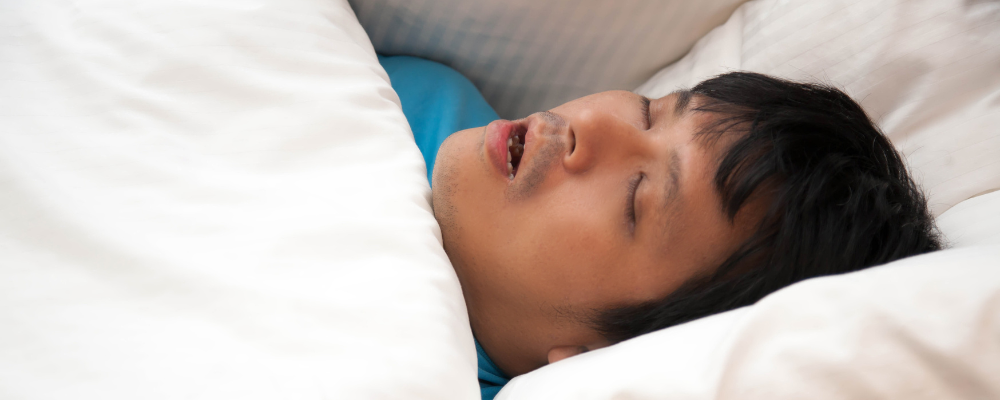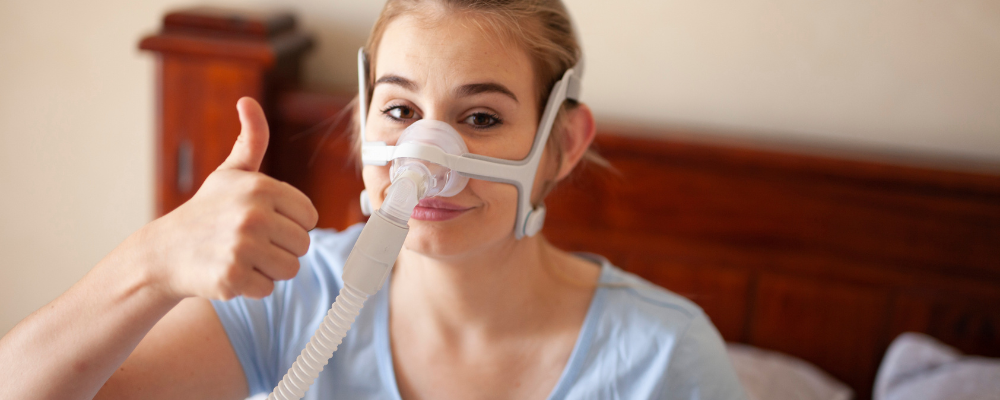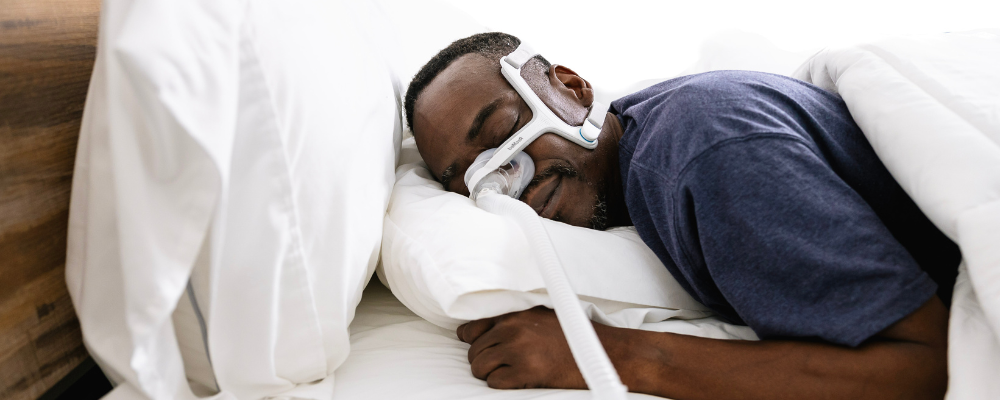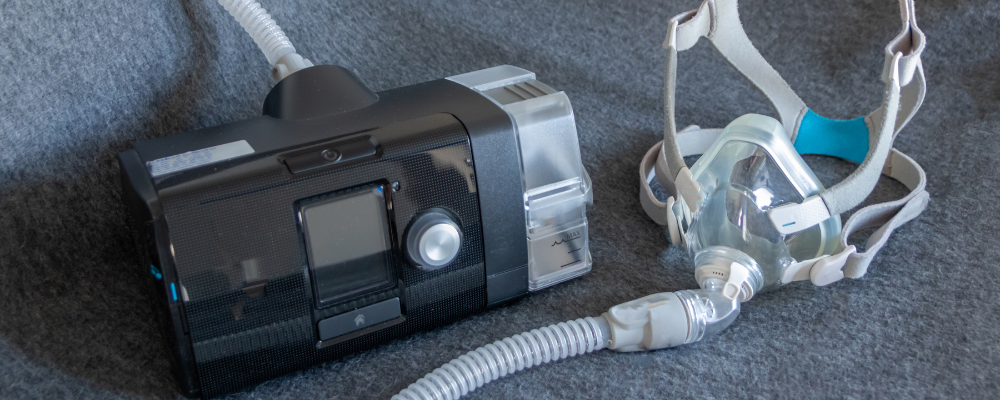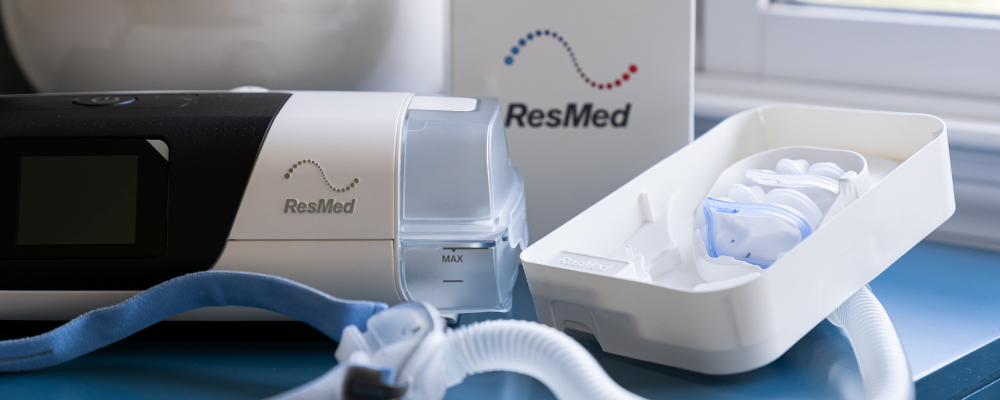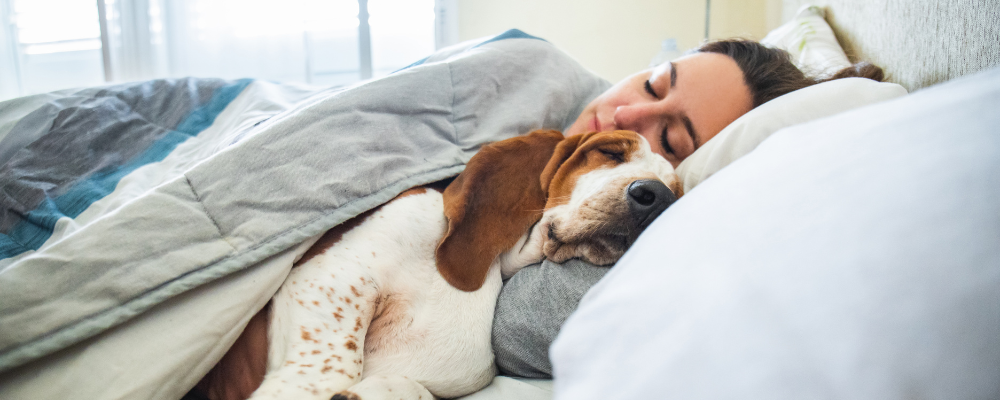We know many patients have grown frustrated with Philips Respironics’ DreamStation recall and the subsequent national PAP machine shortage. While both of these are out of Aeroflow Sleep’s control, we want to caution you about an alternative CPAP therapy solution some have been led to try out of desperation: micro-CPAP machines.
It’s unsurprising that patients are enticed by these devices. Micro-CPAPs cost as little as $15 on Amazon and claim to “maximize the airflow through the nasal passage and stop snoring,” which is a common symptom of sleep apnea. Of course, you shouldn’t believe everything you read on the Internet…unless it’s this, because we’re here to tell you how an RN and her patient found out micro-CPAPs don’t work.
IN THIS ARTICLE
- What is a micro-CPAP?
- How is a micro-CPAP different from a traditional CPAP machine?
- What are the benefits of using a CPAP machine?
- Should you use a micro-CPAP?
- 4 CPAP Alternatives That Do Work
- Treating Sleep Apnea with Aeroflow Sleep
CPAP THROUGH INSURANCE
Aeroflow Sleep is in-network with most primary insurance companies and is accreditted by Medicare and Medicaid. Complete our Qualify Through Insurance Form, and we will automatically check to see if your plan covers CPAP supplies; including a machine, mask, and accessories. ***Must have a sleep study to qualify.***
You will also receive the care and attention every sleep apnea patient deserves; one-on-one clinical support in-home or via telehealth, a dedicated Sleep Specialist you can contact during business hours, and a user-friendly online portal with tailored replacement schedule, important updates and notifications, and educational resources.
Let us take the headache out of healthcare. Join the Aeroflow Sleep family today! It only takes 5-7 minutes to get started.
What Is A Micro-CPAP?
A micro-CPAP is a small, plastic anti-snoring device that patients insert into the nostril; much like a CPAP mask with nasal pillows but without the headgear, tubing, or even the CPAP machine itself. Such appeal has CPAP users replacing their traditional CPAP machine with a micro-CPAP, hoping it will treat sleep apnea.
How Is A Micro-CPAP Different From A Traditional CPAP Machine?
Besides going hoseless, maskless, and machineless, how a micro-CPAP is different from a traditional CPAP machine is still all in the parts.
Micro-CPAP's
- A micro-CPAP uses micro-blowers (itty bitty fans) to generate the air pressure you breathe.
- Micro-CPAPs have nasal dilator exhalation vents that allow you to exhale through the nose; this is problematic for mouth breathing.
- Because micro-CPAPs are so compact, they are cordless and run on a rechargeable battery.
Traditional-CPAP Machines
- CPAP machines generate air pressure too, and they use a technology to recognize apneic events—when you stop breathing at night.
- CPAPs have built-in humidifiers and ramp functions that make air pressure more comfortable.
- Unless your CPAP machine is designed for travel, it must be plugged into an electrical outlet.
The primary benefit of using a CPAP machine is knowing that it’s backed by scientific research. After all, there’s a reason they are considered the most-effective, non-invasive treatment for obstructive sleep apnea (OSA.)
To get a CPAP machine, you need a prescription from your primary care doctor that states you have a sleep disorder, and how you’re diagnosed with a sleep disorder is by having a sleep study. During a sleep study, a few sensors will monitor your breathing pattern, airflow, oxygen levels, and heart rate to determine the cause of your sleep problems. This can be done either in-home or in a lab, and the data collected will be used to calculate your severity of sleep apnea.
Now, would you really want to use a micro-CPAP, something that can be purchased without a scientifically-backed diagnosis, when you have the opportunity to be confident in the treatment you’re receiving?
What Are The Benefits Of Using A CPAP Machine?
According To An RN
Michelle Worley, Director of Clinical Operations at Aeroflow Sleep and Registered Nurse, circles back to the importance of scientific research, “Micro-CPAPs have not received FDA approval and are still a few years away from that. The Airing Micro-CPAP Device specifically is not even being sold at this time. Apparently, Airing has asked for funding donations from the public and has received around $1.9 million and has not produced anything.” Indiegogo and fundairing.com are two of these crowdfunding sites.
This immediately raises red flags in the minds of most healthcare providers, but aside from the skepticism felt by the experts, there are also key parts and functions missing from micro-CPAPs. Michelle gave us an example, “Patients cannot attach a humidifier to a micro-CPAP, which results in dry nasal passages that cause nose bleeds, congestion, even pain.” No one wants that.
Furthermore, the Airing device is not as conventional as it looks. Michelle elaborates, “The micro-blowers inside are traditionally used to cool computer chips [in an effort] to prevent overheating.” You’re not a computer, so no, you shouldn’t use a micro-CPAP. In fact, after testing it, one of Michelle’s own patients wholeheartedly agrees the entire product is misleading.
Should you use a micro-CPAP?
If you said yes, we concede that there are pros to using a micro-CPAP; such as it being small and lightweight, inexpensive, and maskless. However, these benefits hardly outweigh the cons.
According To Her Patient
We have changed the patient’s name for his protection. Otherwise, the following is 100% true. Let’s call the patient Jake.
Jake hypothesized that micro-CPAP devices could produce an air pressure of at least 5.0 cmH2O, which is the highest starting continuous positive airway pressure on one of the most popular CPAP machines today. If true, he could therefore conclude that micro-CPAPs are equally as likely to treat OSA.
For the purpose of his experiment, Jake purchased a micro-CPAP through Amazon as well as a CPAP meter, which is basically a tire pressure gauge specifically designed to measure the cmH2O levels emitted from a CPAP machine.
He set his CPAP machine to start at 5.0 cmH2O for the first 5 minutes before the autotitrator began to ramp up. When Jake attached the CPAP meter to the end of the hose where his CPAP mask should be, it correctly showed 5.0 cmH2O of air pressure was blowing from his CPAP machine prior to ramping up.
When placed at the end of the micro-blowers, there was not enough air pressure coming from the micro-CPAP to lift, let alone move, the marble within the CPAP meter. A couple more attempts yielded the same results and then killed the rechargeable battery. Not to mention, only one of the two micro-blowers turned on at any given time. Thus, Jake concluded that the micro-CPAP cannot treat OSA and ultimately doesn’t work.
4 CPAP Alternatives That Do Work
In case you haven’t caught on, Aeroflow Sleep does not support micro-CPAPs, but that’s not to say there aren’t CPAP alternatives that do work. You can try to treat sleep apnea without a CPAP machine. 4 such methods include:
- Oral Appliance Therapy
- Positional Therapy
- Surgery
- Lifestyle Changes
There are also APAP and BiPAP machines available. APAPs, or AutoPAPs, automatically adjust the airflow to your breathing pattern within a range of pressure settings. That way your pressure is only ever as high as you actually need it to be. BiPAPs, or Bilevel CPAPs, offer two different pressure settings. The higher pressure gives you the support you need while inhaling, and the lower pressure makes it easier to exhale.
Treating Sleep Apnea With Aeroflow Sleep
Regardless of whether or not you choose to use a CPAP, APAP, or BiPAP machine or try another clinically-approved alternative, your Aeroflow Sleep Specialist can work with your insurance provider to get it covered up to 100%. Yes, that means the sleep therapy you truly deserve may cost even less than a $15 micro-CPAP. It may even be free!
Talk to your doctor about treating sleep apnea with Aeroflow Sleep. We’ll find out what you’re qualified for and doubly ensure your CPAP therapy solution is a reliable one. If you have any questions, please call us at (800) 480-5491.


